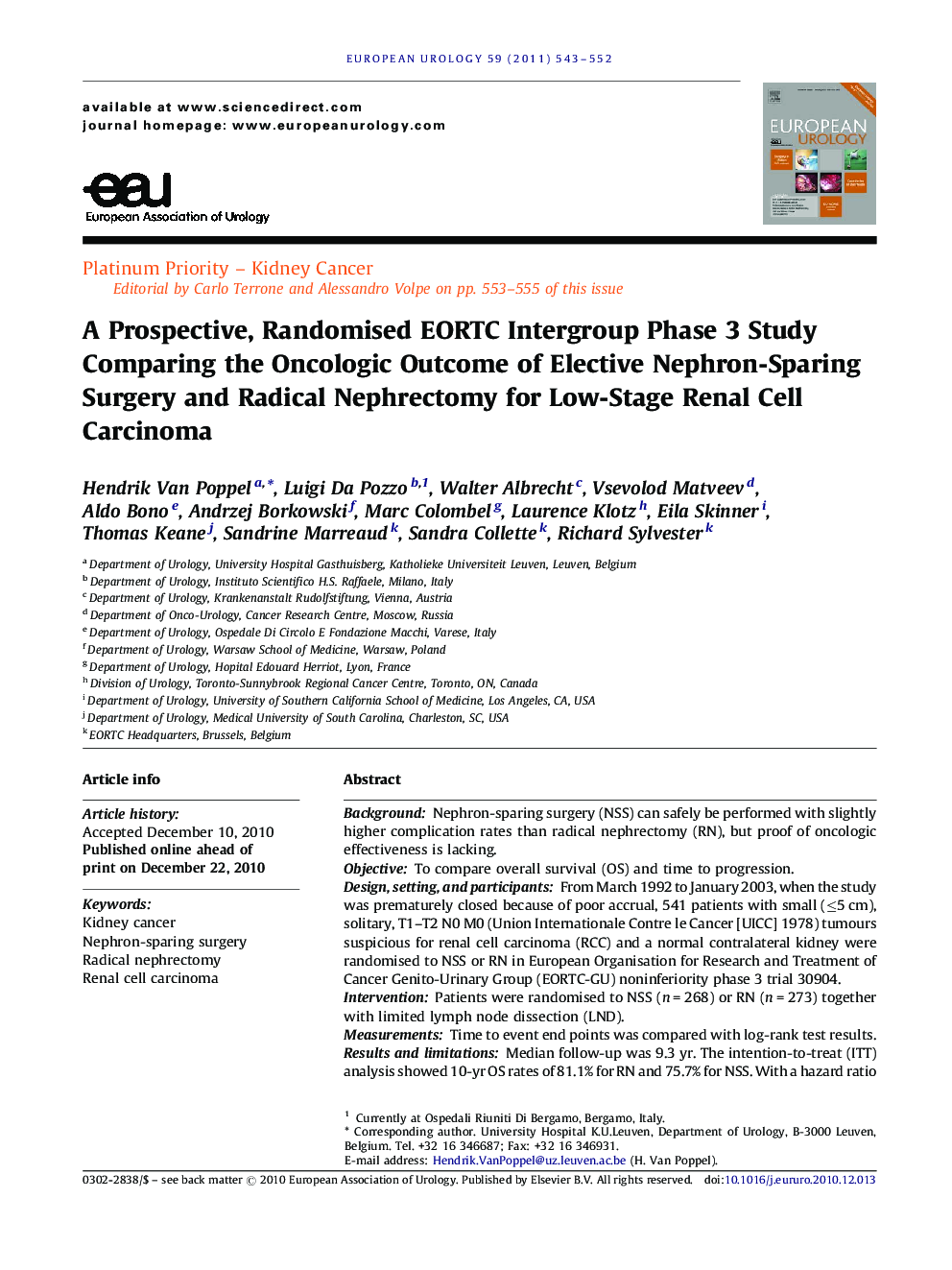| کد مقاله | کد نشریه | سال انتشار | مقاله انگلیسی | نسخه تمام متن |
|---|---|---|---|---|
| 6178234 | 1253180 | 2011 | 10 صفحه PDF | دانلود رایگان |

BackgroundNephron-sparing surgery (NSS) can safely be performed with slightly higher complication rates than radical nephrectomy (RN), but proof of oncologic effectiveness is lacking.ObjectiveTo compare overall survival (OS) and time to progression.Design, setting, and participantsFrom March 1992 to January 2003, when the study was prematurely closed because of poor accrual, 541 patients with small (â¤5 cm), solitary, T1-T2 N0 M0 (Union Internationale Contre le Cancer [UICC] 1978) tumours suspicious for renal cell carcinoma (RCC) and a normal contralateral kidney were randomised to NSS or RN in European Organisation for Research and Treatment of Cancer Genito-Urinary Group (EORTC-GU) noninferiority phase 3 trial 30904.InterventionPatients were randomised to NSS (n = 268) or RN (n = 273) together with limited lymph node dissection (LND).MeasurementsTime to event end points was compared with log-rank test results.Results and limitationsMedian follow-up was 9.3 yr. The intention-to-treat (ITT) analysis showed 10-yr OS rates of 81.1% for RN and 75.7% for NSS. With a hazard ratio (HR) of 1.50 (95% confidence interval [CI], 1.03-2.16), the test for noninferiority is not significant (p = 0.77), and test for superiority is significant (p = 0.03). In RCC patients and clinically and pathologically eligible patients, the difference is less pronounced (HR = 1.43 and HR = 1.34, respectively), and the superiority test is no longer significant (p = 0.07 and p = 0.17, respectively). Only 12 of 117 deaths were the result of renal cancer (four RN and eight NSS). Twenty-one patients progressed (9 after RN and 12 after NSS). Quality of life and renal function outcomes have not been addressed.ConclusionsBoth methods provide excellent oncologic results. In the ITT population, NSS seems to be significantly less effective than RN in terms of OS. However, in the targeted population of RCC patients, the trend in favour of RN is no longer significant. The small number of progressions and deaths from renal cancer cannot explain any possible OS differences between treatment types.
Journal: European Urology - Volume 59, Issue 4, April 2011, Pages 543-552